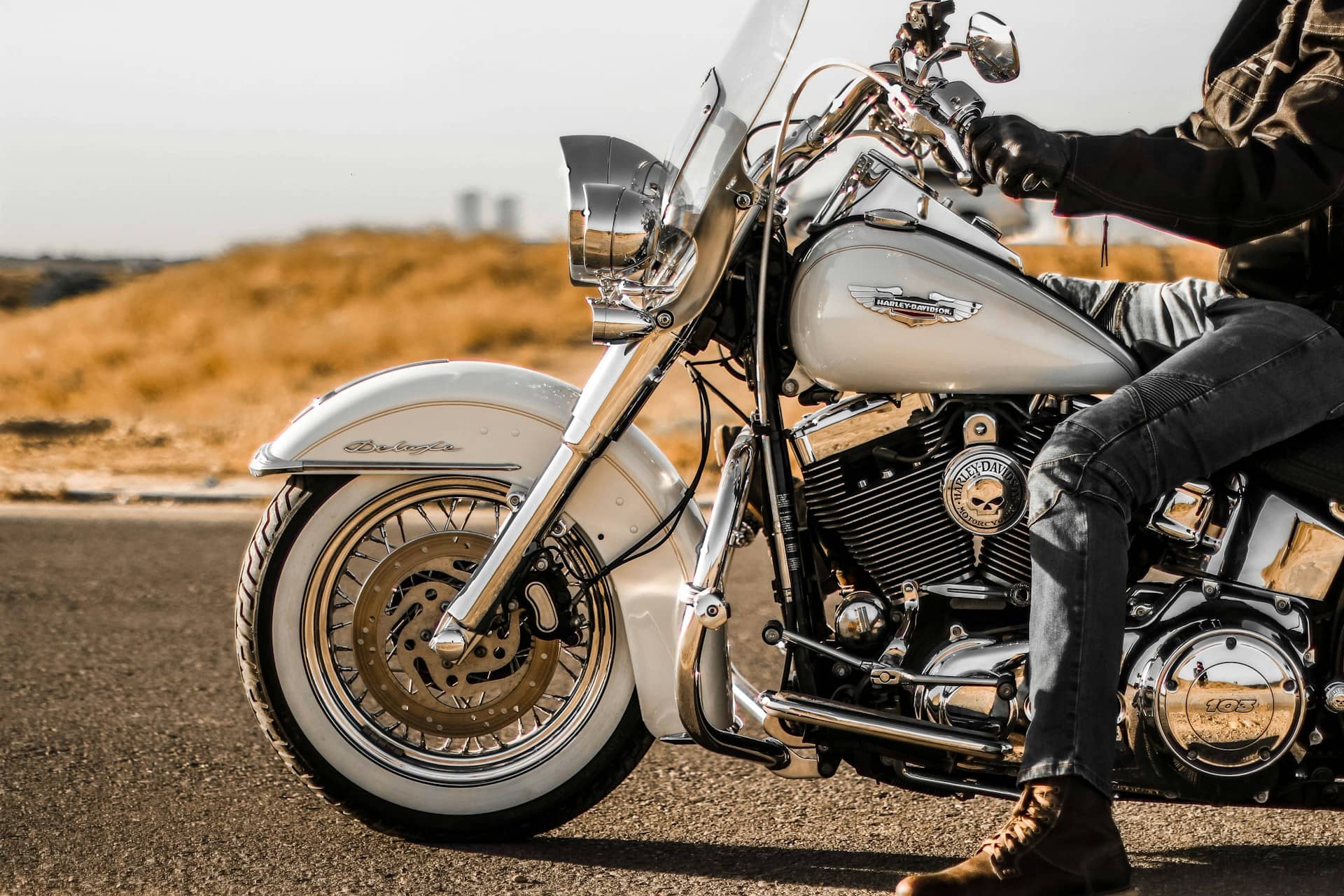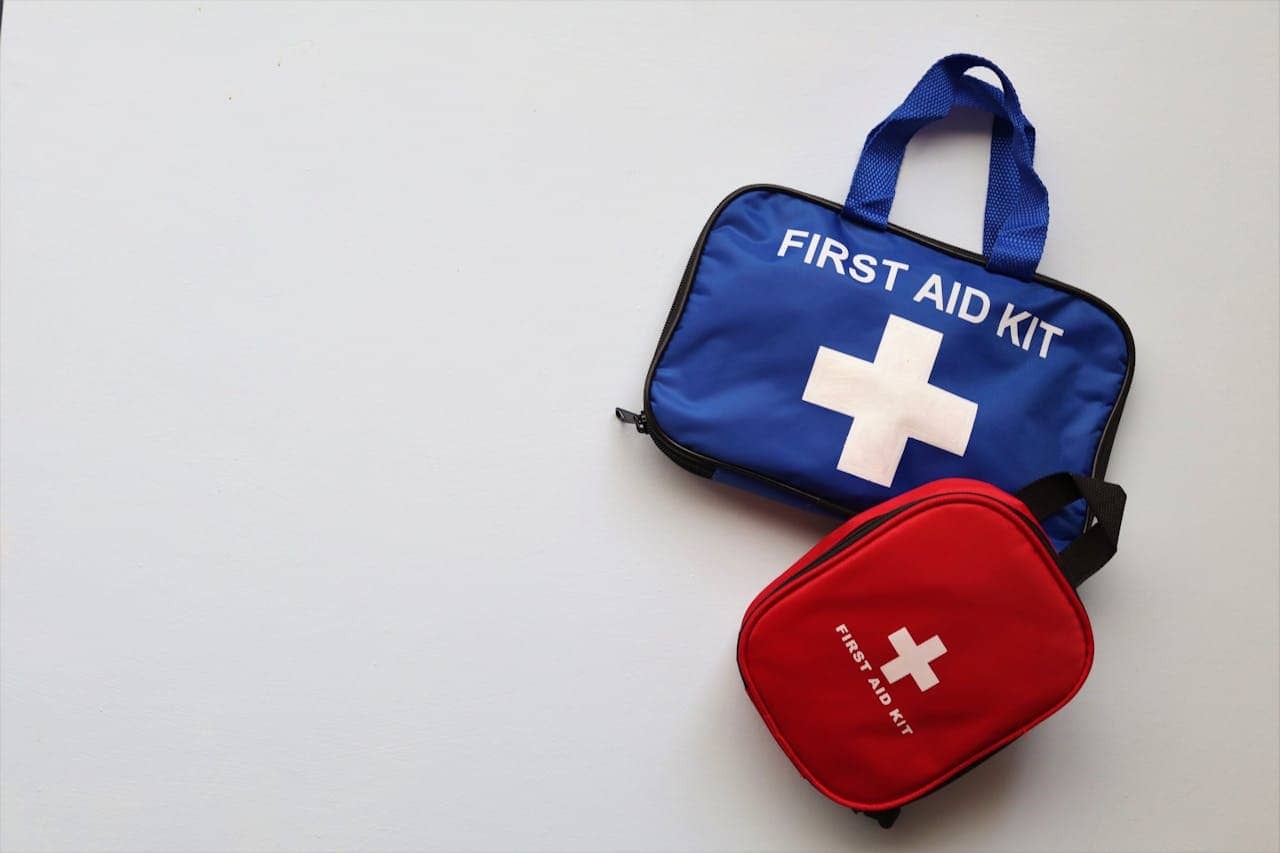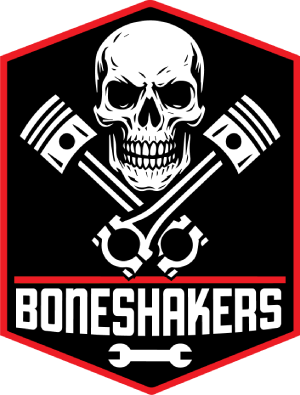Key Takeaways:
- Burns range from mild to severe, so it helps to know what kind of burn you’re dealing with.
- Acting quickly by cooling the burn and covering it with clean bandages can make a big difference in recovery.
- Burns can be prevented by wearing long pants and installing heat-resistant shields.

It’s well known that bikers are tough, but ask any seasoned rider, and they’ll tell you that exhaust burns are a serious issue. If you’ve been riding for a while, you’ve most likely experienced the sting of a hot exhaust pipe or had a close shave. That’s why Boneshakers put together this guide so that if your leg meets a hot exhaust, you can react fast, reduce pain, recover faster, and prevent infections.
The Lowdown on Different Burn Types
Before you do anything, first check what kind of burn it is. The three main types are grouped as first-, second-, and third-degree burns.
First-Degree Burns
If you get a burn from your motorcycle exhaust and it turns red and sore, kind of like a nasty sunburn, then it’s probably a first-degree burn. These are the mildest kind, and they only hit the top layer of the skin. These burns usually heal within a week or so, as long as you keep them clean.
Second-Degree Burns
Second-degree burns affect both the outer and inner layers of the skin, going a little deeper. They’re painful and usually blister, swell, and turn red, so if the burn is quite big or in a tricky place, you might want to get it checked out. These burns from a motorcycle exhaust can take a bit longer to heal, often a few weeks or more, but they usually get better on their own.
Third-Degree Burns
A third-degree leg burn from a motorcycle exhaust is considered the most serious. It goes through every layer of skin and sometimes even the tissue below. While the injury may look severe, the most important step is to stay calm and seek medical treatment right away.
Treating Different Types of Burns

When you burn yourself on a hot exhaust, the first few minutes matter most. Quick, simple steps can ease the pain, speed up healing, and help prevent things from getting worse. Here’s the Boneshakers’ breakdown for treating different burns:
Treating a First-Degree Burn
With a first-degree burn from a motorcycle exhaust, the first thing to do is cool it down, keep it covered, and manage the pain. Hold the affected area under running water until the burning eases up. Next, cover it with a sterile, non-stick bandage or a clean cloth and apply a simple petroleum-based ointment a couple of times a day to help it heal faster.
Don’t forget pain relief. Over-the-counter medications like acetaminophen can treat mild to moderate pain from a first-degree burn.
Treating a Second-Degree Burn
Second-degree burns hit deeper, so treating them takes a little extra care since they’re more painful and can get infected. If you get a second-degree burn from a motorcycle exhaust, the first thing to do is cool the area by holding it under water for 10 to 15 minutes. After cooling it down, the next step is to lightly cover the burn with a sterile, non-stick bandage to protect the burn.
If you get a second-degree leg burn from a motorcycle exhaust, it’s a good idea to get it checked out by a doctor if the burn causes blisters or covers a large area. A medical professional can see how deep the burn is and give you medicine if needed.
Treating a Third-Degree Burn
It’s important to seek emergency care as soon as possible if you get a third-degree burn from a motorcycle exhaust. These types of burns go through all layers of skin and occasionally the underlying skin, so they can’t be treated at home. If you can’t call emergency help right away, follow the steps below and get to the nearest medical center as fast as possible:
- Avoid removing clothing or anything else that may have stuck to the burn, as this can make things worse.
- Don’t soak the burn in cold water, as this can cause hypothermia or even shock.
- Apply clean, cool bandages lightly over the burn without squeezing or pressing.
- Keep the burned area raised, as this can help prevent swelling.
Avoiding Burns from Motorcycle Exhaust
A study on motorcycle injuries related to hot exhaust pipes found that the most common place for burn wounds was below the knee, especially on the right leg. Researchers found that you can seriously reduce the risk of leg burns from a motorcycle exhaust by wearing long pants. Also, installing a heat-resistant shield positioned safely away from the pipes makes every ride safer.
Bottom Line from Boneshakers
Exhaust burns are painful, but you can make them less painful and heal faster if you know what to do. Stay calm and focused, act quickly, and follow these steps to ensure the best outcomes. With the right care, a motorcycle exhaust burn won’t keep you down for long, and you’ll be back on your bike in no time.

